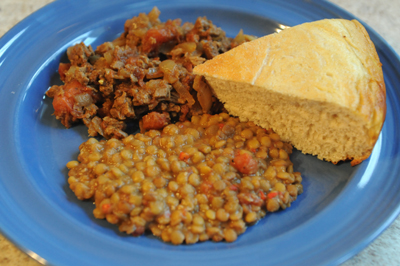 |
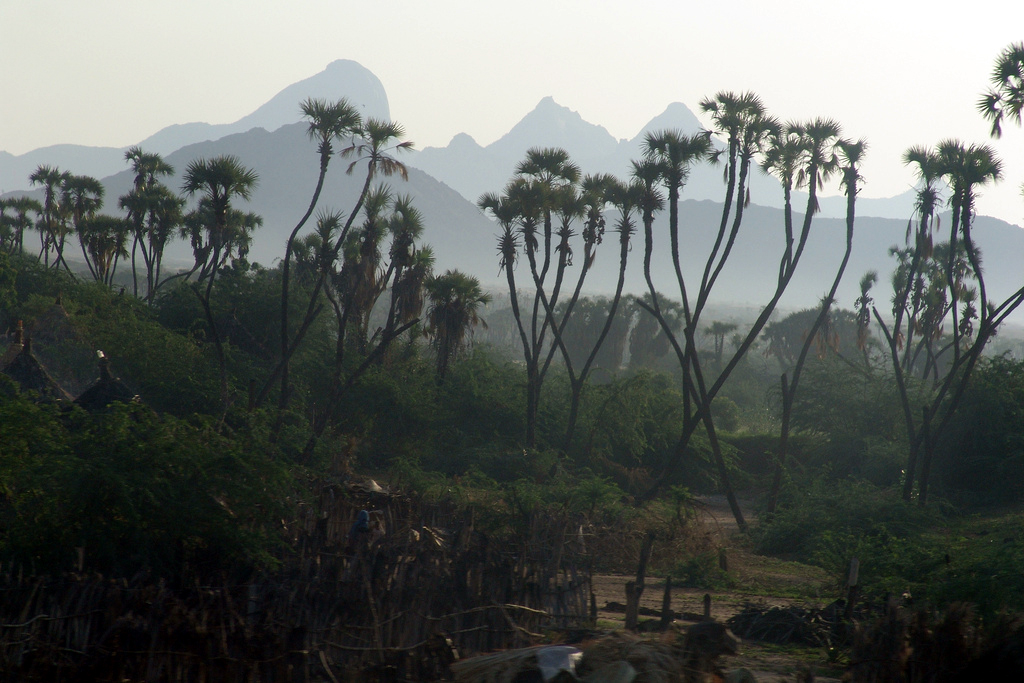 |
| Gash-Barka, Eritrea. Photo Credit: CharlesFred via Compfight cc |
The government of Eritrea is one of those "See? We're a democracy!" types of governments. They have a constitution which allows for multi-party politics, and they schedule national elections whenever they think people might start to suspect that the government isn't really a democracy. However, the constitution has never been implemented, political parties other than the primary ruling party are not allowed to organize and national elections are always canceled before they can be carried out. The "president" of Eritrea is the same guy who has been in office since 1993, when Eritrea separated from neighboring Ethiopia.
 |
Eritrea is strategically important in the region because of its mineral resources and Red Sea coastline. Because of this, it has a long history of squabbling with Ethiopia—the latter annexed it in 1962, which led to a war that lasted 30 years. Though Eritrea has been independent since 1993, Ethiopia is still having a hard time letting go, and the two nations are constantly fighting over borders and accusing each other of various misdeeds.
The proximity and shared history of these two frenemies means of course that their cuisine is very similar. In fact the first two recipes I decided to cook for this entry turned out to be more or less the same as the recipes I found for Ethiopia. So I did end up changing my menu at the last minute, just so I wouldn't be featuring two almost identical meals within a few weeks of each other. Here's what I ultimately settled on:
Tsebhi Sega (Spicy Minced Meat)
- 2 medium onions, chopped
- 2 tsp sunflower or other vegetable oil
- 3 tbsp berbere
*
- 3 tbsp tegelese tesmi (see recipe below)
- 1 tsp chopped ginger
- 1 tsp chopped garlic
- 6 large tomatoes, peeled**
- 2 1/4 lb beef or lamb, minced***
- pepper and salt to taste
**For easier peeling, blanch the tomatoes in boiling water until the skins start to split. Then take them out and put them in cold water for a few minutes. The skins should come right off.
***The original recipe says "shredded," which doesn't really seem possible with raw meat. So I just minced mine.
Which includes:
Tegelese tesmi (herb butter)
- 1 cup unsalted butter
- 1/3 cup water (more if needed)
- 2 small onions, shredded
- 2 cloves garlic, crushed
- 2 tsp ginger, shredded
Alitcha Birsen (Lentils)
- 5 tbsp sunflower or other vegetable oil
- 6 cloves garlic, crushed
- 8 oz tomatoes, peeled and sliced*
- 8 oz lentils
- 1 tsp salt
- 1 tsp black pepper
- 1 tsp ginger
- 2 fresh red chilies, seeded and minced
- 4 cups boiling water
Hembesha (Eritrean bread)
- 1 1/4 cup lukewarm water
- 2 1/2 tsp active dry yeast
- 1 tsp ground fenugreek seed
- 1/2 tsp ground coriander seed
- 1/2 tsp ground cardamom seed
- 1 clove garlic, crushed
- 1 tsp salt
- 1 egg
- 1 tbsp oil or butter
- 3 3/4 cup flour
- Dash of white pepper, cayenne, ground ginger (optional)
Like Ehtiopia, Eritreans eat a lot of injera, which is a special fermented type of bread, kind of like a spongy pancake. I think I'm going to try making it for Ethiopia, but I have not had good experiences with injera in the past so I didn't want to make it for both countries. That's why this week I decided to do the hembesha instead.
Despite the number of recipes I did this week, the meal was actually really simple to put together and didn't take a lot of time. I started with the hembesha:
I know I don't have to tell you that I just dumped everything in my bread machine. If you don't have a bread machine, here are the traditional instructions:
First dissolve the yeast in the water and let stand until frothy. Then add the eggs and spices.
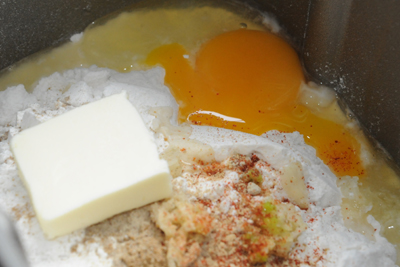 |
Cover with a damp towel and let rise in a warm place for an hour or two. Punch down and knead again, shaping the dough into a round, flat shape about 3/4 of an inch thick. Put it in an oiled frying pan and let rise again until roughly doubled in size. Now use a fork or knife to make lines in the top of the bread (this is just for aesthetics).
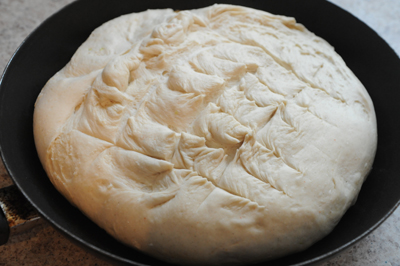 |
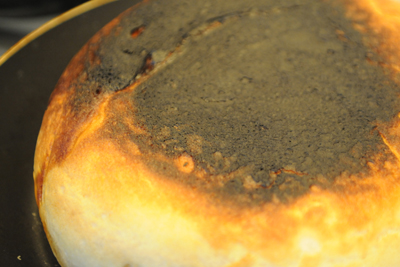 |
| Ooooops |
Once the bottom of the bread is a nice golden color flip it over and let it bake on the other side for about five minutes, until you get a nice golden color there, too. Remove from the pan and spread a little butter over the top. Slice it up in wedges like a birthday cake.
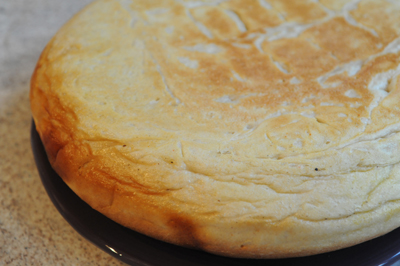 |
Fry the garlic in the oil until it starts to turn a nice golden color, then take it off the heat. Add the sliced tomatoes and simmer for 5 minutes, then add the lentils and continue to simmer for another couple of minutes.
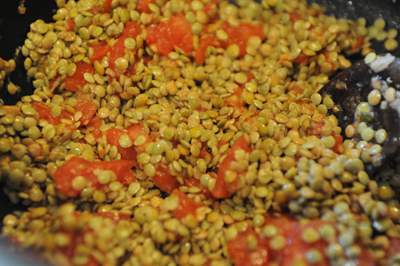 |
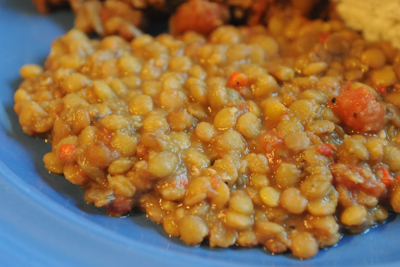 |
Heat the butter and water in a small pan. When the butter has melted, add the rest of the ingredients.
 |
Finally, the tsebhi sega:
Heat the oil in a large pot and cook the onions until they start to brown a little. Add the berbere and the tegelese tesmi (butter) and a little bit of water. Cook over a low flame for about 10 minutes, then add the ginger, garlic and tomatoes.
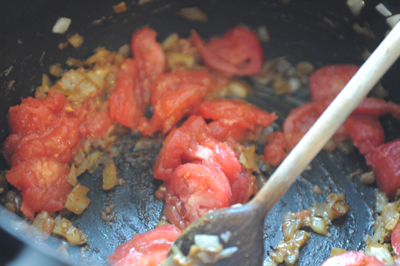 |
 |
The meat was wonderful, and so were the lentils. They made even better leftovers. I actually can't pinpoint what it was about those lentils that I liked so much because there was nothing terribly unusual about the ingredients, but they had a really nice earthy flavor that was a great compliment to the meat.
I do love the simple meals, especially when they are so tasty.
Next week: Estonia
For printable versions of this week's recipes:











0 comments:
Post a Comment